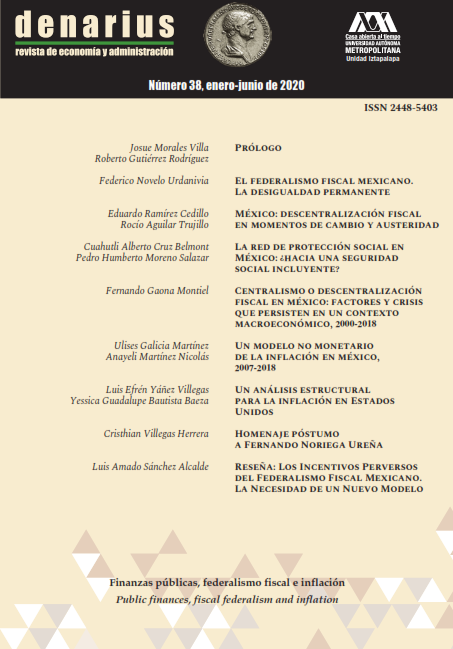A structural analysis for inflation in the United States
Abstract
Inflation in all economies is a thermometer of economic activity, its financial stability and one of the most important parameters of the purchasing power of a country. In this sense, the study of the direct determinants of inflation is crucial to prevent inflationary shocks in the short and medium term. Since the last century, monetary variables have been linked as sole causes of inflation, completely excluding the structural inflationary approach. The purpose of this article is to investigate in the determination of inflation by structural origins, the central hypothesis being that the price of regular gasoline as a direct cause of inflation. The different inflationary theories are studied and the transfer of the oil price to the inflation of the United States (an economy with ultra-low inflation rates) is examined. To corroborate this hypothesis, an Autorregressive Movil Average Exogenous (ARMAX) econometric model is performed, which links gasoline prices and inflation lags as inflationary determinants. Finally, monthly data is forecast for 2019 inflation.
Downloads
References
Blanchard, O., & Gali, J. (2007). “The Macroeconomic Effects of Oil Shocks: Why are the 2000s So Different from the 1970s?”, International Dimensions of Monetary Policy, 373-421.
Bruno, M., & Sachs, J. (1985). Economics of Worldwide Stagflation, Cambridge: Harvard University Press.
CEPAL. (1986). Tres ensayos sobre inflación y políticas de estabilización, Oficina de CEPAL en Buenos Aires, Estudios e informes de la CEPAL.
Conflitti, C., & Luciani, M. (2017). Oil price pass-through into core in, Federal Reserve.
FMI. (2019). Perspectivas de la economía mundial (WEO), actualización de las proyecciones centrales, Washington.
Friedman, M. (1968). “The role of monetary policy”, The American Economic Review, p. 17.
Gutiérrez Rodríguez, Roberto (2019). “México 2016-2018: ¿inicio de una nueva fase de desarreglo inflacionario?”, ECONOMÍAunam, Vol. 16, No. 47, mayo-agosto.
Heath, J. (2012). Lo que indican los indicadore, INEGI.
Kilian, L., & Lewis, L. (2011). “Does the Fed respond to oil price shocks?”, The Economic, pp. 1047-1072.
Prebisch, R. (1961). Desarrollo económico, planeamiento y cooperación internacional, Santiago de Chile, CEPAL.
Sunkel, O. (1958). “La inflación chilena: un enfoque heterodoxo”, El Trimestre Económico.














